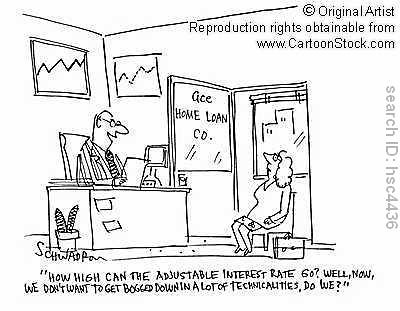Financial institutions should provide a fact sheet in a standardised format when marketing loans for residential property to consumers.
It should contain information on the tenor of the loan, monthly and annual repayment amounts at different interest rate levels and fees payable, among other things.
 In a consultation paper on the proposal, the Monetary Authority of Singapore (MAS) says the fact sheet will help consumers understand that higher interest rates could have severe implications if they overextend themselves.
In a consultation paper on the proposal, the Monetary Authority of Singapore (MAS) says the fact sheet will help consumers understand that higher interest rates could have severe implications if they overextend themselves. It will provide, in an accessible form, information essential to a consumer’s decision to take up a residential property loan, including information on how their loan repayments may change under different interest rate scenarios.
Under the proposal, financial institutions will be required to provide the Fact Sheet to consumers when they first enter into a discussion with the consumer on the key features of the housing loan.
MAS says a residential property loan is a long-term financial commitment.
The current low global interest rate environment will not continue indefinitely.
The fact sheet is intended to help consumers understand that higher interest rates could have severe implications if they overextend themselves.
Some economists have also started flagging the possibility that the ultra-low borrowing rates in Singapore could soon start rising. The 3-month Singapore dollar Swap Offer Rate (SOR), a popular benchmark rate used for home loans, hovers at just 0.2% today, but was at more than 3% just five years ago.
Interest rates have been rising in other markets like Hong Kong and Malaysia. Recently, Bank of America Merrill Lynch economist Chua Hak Bin noted demand for loans here was rising quickly, which could prompt some banks to raise rates.
A sharp rise in rates can add quickly to a borrower's monthly financial burden, given the popularity of loan packages with fluctuating rates.
The ultra-low SOR currently may mean that a borrower with a 35-year, $1 million loan could pay just 1% interest in the first year – working out to a monthly instalment of just $2,823.
But every 1% point increase in the SOR will add more than $500 to the instalments. If the rates rose back to 2006 levels of about 4%, he would end up paying more than $4,300 monthly.
Mr Justin Chiu, executive director of Hong Kong property developer Cheung Kong, also reckons that residential prices here may fall by up to 6% when interest rates begin rising. This could have serious implications for buyers who cannot sell in a falling market, yet have overextended themselves with big home loans on the belief that interest rates will stay at rock-bottom levels.
.








5 comments:
Hi, how do we calculate the repayment amount of $2823 if the interest is 1% on a loan of $ 1mil for a tenure of 35 years?
Hi David,
Excellent question! We are unable to get $2823 after doing the maths either, but have double checked on the ST report to ensure we got the facts right.
Another reason why the implementation of the bank facts sheet is timely(?)
Cheers!
and i don't understand why they are using SOR as a ref. 90% of the banks are offering Sibor
Hi Panda,
The only reason we can think of is because SOR is the more volatile of the two rates.
As the US$ and US interest rate are very low at the moment, SOR packages may look more attractive than SIBOR.
For those who are interested:
SIBOR stands for Singapore Interbank Offered Rate and is a daily reference rate based on the interest rates at which banks offer to lend unsecured funds to other banks in the Singapore wholesale money market (or interbank market).
The Swap Offer Rate (SOR) represents the effective cost of borrowing SGD synthetically through borrowing USD for 3 months and swap out the USD in return for SGD for the same maturity.
Differences between the two rates include:
1. Sibor is influenced by the supply and demand for funds in the Singapore interbank market, whereas SOR is more exposed to factors external to Singapore such as USD interest and exchange rates.
2. SOR is more volatile because exchange rates as well as USD money market rates tend to fluctuate more.
Thank you for sharing this information. It has helped me to know more about how to decorate home
Post a Comment